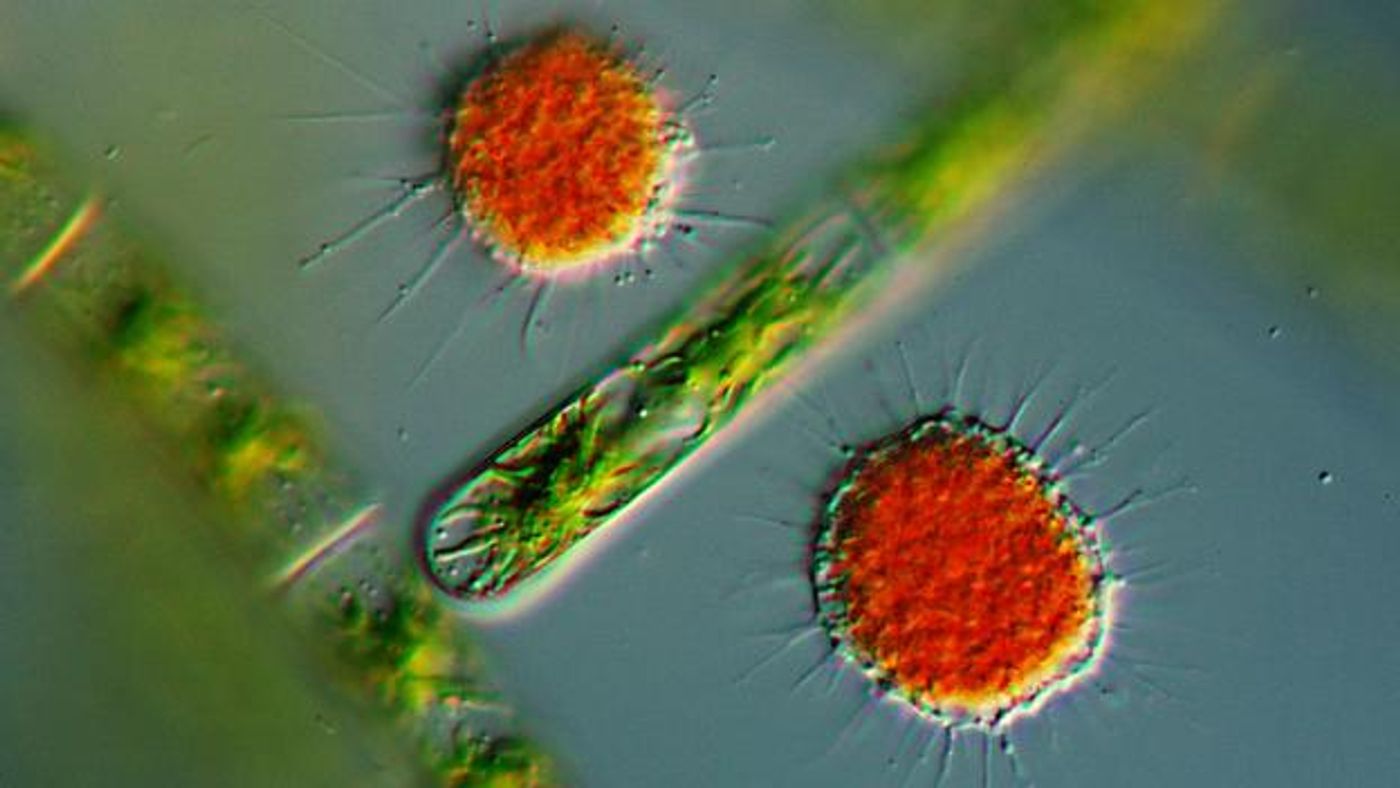While paleontologist Dr. Susannah Porter from the University of California was examining her scanning electron microscope images of ancient fossils found deep in the Grand Canyon, she saw a series "deliberate" holes in the cell walls of several eukaroyotic species. She knew it probably was not a result of natural wear and tear, since all of the holes in individual cells were around the same size. In fact, Porter had found ancient remnants of cells ravaged by vampiritic microbes.
The discovery of these fossilized remains of punctured eukaryotic cells has prompted massive scientific speculation about the role of ancient microscopic predators in species diversity. Although no predator fossils have been found yet, scientists like Porter believe that ancient predation induced evolution of skeletons and defensive behaviors in eukaryotic species. Natural selection would have favored organisms with hard cell walls that resisted perforation or cells that developed the "ability to burrow."
A modern predatory group of amoebas of the genus
Vampyrella are believed to use enzymes to break through cell walls and ingest cell contents. These amoeba species were first discovered and described over 150 years ago, and the details of their evolutionary history are still being studied (
PLoS One).
Porter found punctured cells with as many as 30 holes, and evidence of ancient microscopic predators continues to be researched. Predation pressure sparks species diversity, and ancient "vampires" were potentially a factor in eukaryotic diversification millions of years ago.
Watch the following video of
Vampyrella borealis, an amoeba that penetrates and sucks out cell contents of algae.
(Source:
Sciencenews.org)




![Master Lab Weighing: Accuracy, Compliance & Audits [eBook]](https://d3bkbkx82g74b8.cloudfront.net/eyJidWNrZXQiOiJsYWJyb290cy1pbWFnZXMiLCJrZXkiOiJjb250ZW50X2FydGljbGVfcHJvZmlsZV9pbWFnZV85MWRmZmRjMDIwNDBlMWJjMzYwN2ZiYWY2ZjI4ZGMzYzBmZGMwZGMyXzkxOTcucG5nIiwiZWRpdHMiOnsidG9Gb3JtYXQiOiJqcGciLCJyZXNpemUiOnsid2lkdGgiOjcwMCwiaGVpZ2h0IjozNTAsImZpdCI6ImNvdmVyIiwicG9zaXRpb24iOiJjZW50ZXIiLCJiYWNrZ3JvdW5kIjoiI2ZmZiJ9LCJmbGF0dGVuIjp7ImJhY2tncm91bmQiOiIjZmZmIn19fQ==)




